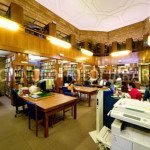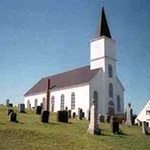North Dakota Genealogy
Guide to Ancestry and Family Tree Records
Sieur de la Verendrye led a group of French Canadians, who explored the area now known as North Dakota between 1738 and 1740. The French ceded most of what is now North Dakota to the United States as part of the Louisiana Purchase, in 1803. Then, from 1804 to 1806, Lewis and Clark explored the area. In 1812, settlers came and settled at Pembina. Those settlers were mainly Irish and Scottish and came to the area, despite the fact that Great Britain and the United States were still in disputes over the land.
A treaty between the two countries was signed in 1812, giving the northeast section of North Dakota to the United states. In 1823 Pembina came under United States ownership. Nevertheless, it wasn’t until the 1870s and 1880s, when the railroad came through the area, that large amounts of people began to settle in the region.
The fur trading industry was the first industry practiced by North Dakota’s early European settlers. However, the farming industry took over after multiple Native American wars and skirmishes and after the railroad came to the area. Although, it is important to note that North Dakota prairie farming has not always been an economically sound industry. In fact, North Dakota farmers have repeatedly expressed their resentment of the fact that wheat prices, transportation, and storage of grain have all been greatly controlled by outsiders and the charges for those services have been too high, at least in the opinions of the farmers.
Although most of the eastern seaboard is caught up in various forms of industry, most parts of North Dakota are not industrial or densely settled. Much of its economy is based on industrial activities, but it also has a lot of farmland as well. The state is also well known as a great place to vacation at almost any time of year. People who live in urban parts of Canada and the United States often travel to North Dakota to get a taste of rural life.
North Dakota Counties – The North Dakota Republic was existed from March 2, 1861 until November 2, 1889. The State of North Dakota entered the union as the 39th state on November 2, 1889. North Dakota borders Minnesota, Montana, South Dakota and Canada. It has 53 Counties. The capital is Bismarck and the official state website is www.nd.gov/.
Select a North Dakota county to view information & records pertaining to each County
North Dakota Genealogy Record Guides
Getting Started with North Dakota Genealogy and Family Trees
Tips for Looking for North Dakota Genealogy Data – Known for having some of the coldest weather conditions in the country, the state of North Dakota is also of substantial interest to historians and genealogists as well. There is a huge amount of Native American history to be found here, but also a large amount of settlement that creates the demand for North Dakota genealogy materials.
Reliable Methods for North Dakota Genealogy Work – Today’s genealogists have many resources available when conducting a North Dakota genealogy research project, and many of these resources are available right through a computer. It is now possible to seek through online resources in order to begin gathering data or even ordering copies of the materials needed for a North Dakota genealogy project.
This does not mean that all resources will be available in an electronic format, however, and many North Dakota groups and organizations are still in the process of digitizing their collections. This means that anyone doing research for North Dakota genealogy will have to begin identifying their “offline” resources too. These are valuable to those looking for North Dakota genealogy, because they may have very unique data available, and it is extremely valuable to genealogists to discover which are the online resources for North Dakota, and which are not.
A Modern Approach for North Dakota Genealogy – Public records tend to be the most useful resources for North Dakota genealogy work, and they are normally divided into the following categories:
- Local Records – a county clerk’s office or website is a “must” from which you can then head to the local genealogical societies, small local libraries, historical societies, and school or college libraries for North Dakota genealogy data. This is data that is usually offline and viewable by appointment or special arrangement.
- State Records – offering everything from probate information to surname lists, state census information, private manuscripts, newspapers, military or veterans information, marriage details, maps, land records, genealogical folders, estate information, deeds, death records, cemetery information, birth certificates and more, these are available as online and offline resources for North Dakota genealogy.
- Vital Records – these records will always include birth, marriage, divorce, and death records from county, state, and national archives. Here you will find census records, newspaper items, cemetery or obituary information, military records, immigration and naturalization details, passenger lists and records as well. These are available as online and offline resources for North Dakota genealogy.
Essential Tools for North Dakota Genealogy – Modern research has introduced all new tools for North Dakota genealogy projects, and these tend to be the tools that reveal the most information with the least amount of effort. We have supplied information about the best of these tools for North Dakota genealogy below:
- ND Department of Health, Division of Vital Records, 600 East Boulevard Avenue, Dept. 301, Bismarck, ND 58505-0200; Website: http://www.cdc.gov/nchs/w2w/north_dakota.htm.
This is the contact information through which you can request birth, death, marriage and divorce records via a written notice, or even online.
Additional state and local records can be found at the:
- North Dakota State Historical Society, 612 East Boulevard Ave., Bismarck, North Dakota 58505; Website: http://history.nd.gov/archives/index.html.
Here you will find the official repository of the historic records of state and local government, including manuscripts, letters, diaries, photos, maps, and other unpublished materials from private individuals and organizations that document economic, social, cultural, and political life.
North Dakota Genealogy Databases and other Helpful Links
Finally, these popular websites provide a tremendous amount of state-specific details to those in search of details for North Dakota genealogy projects.










